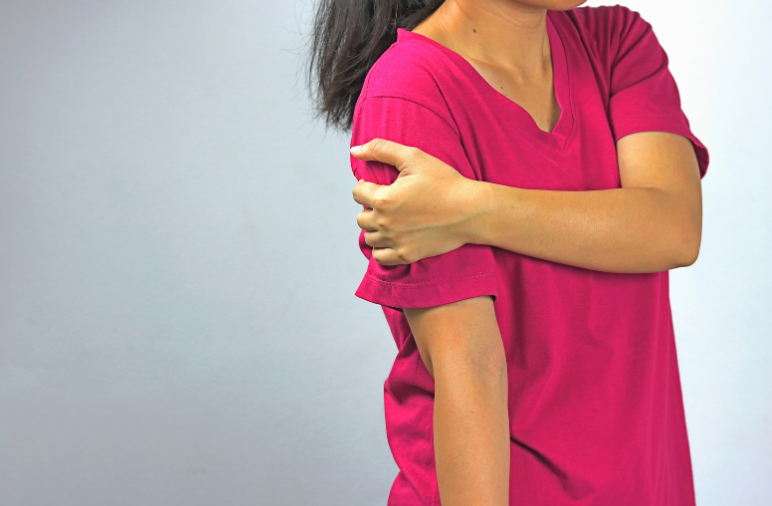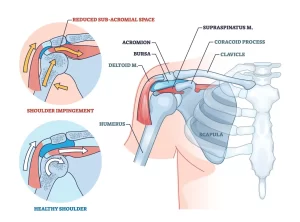
Shoulder Impingement & Rotator Cuff Injury: What you need to know
Shoulder pain with overhead reach or when lying on your side? This guide explains subacromial/“impingement” pain and rotator cuff injury—from tendinosis to complete tear—what causes it, when to scan, and what actually works.
Exercise Library
To access the exercises you need, click on the links below.
- Level 1 Exercises
- Level 2 Exercises
- Level 3 Exercises
- Level 4 Exercises
What is shoulder impingement?
Modern term: Subacromial Pain Syndrome (SAPS)—pain from the cuff/bursa during elevation due to overload and control issues, not “bone spurs alone.”
Rotator cuff basics
The cuff (supraspinatus, infraspinatus, teres minor, subscapularis) centres the ball in the socket. With overload, tendons/bursa get irritable; longer-term you may see tendinosis, partial or full-thickness tears.
Common causes & triggers
- Spike in overhead work/sport or gym pressing
- Reduced cuff/scapular endurance; stiff thoracic spine/pecs
- Repetitive friction of the bursa
- Age-related tendon change
Typical symptoms
- Painful arc (60–120°), reaching behind back, night pain on the shoulder
- Ache at the front/side of the arm; reduced strength lifting overhead
- After trauma + marked weakness → suspect larger tear
Do I need a scan?
Not initially. Consider ultrasound or MRI if: traumatic onset with weakness, symptoms >6–12 weeks despite rehab, or you’re considering injections/surgery.
What actually helps (evidence-aligned)
- Graded loading (exercise rehab)
- Activity tweaks (short term): reduce painful overhead reps; keep gentle movement.
- Manual therapy/taping: short-term to enable exercise.
- Medications (short course with GP advice).
- Injection: subacromial corticosteroid can give short-term relief if pain blocks rehab—works best with a structured program.
- Surgery: decompression rarely outperforms rehab; repair is for acute repairable tears or persistent disability after high-quality rehab.
Self-care tips
- Sleep: non-sore side with a pillow hugged under the forearm, or on your back with arm support
- Keep walking/cycling for fitness
How we help
At LivFit Physio Mornington (11 Railway Grove) we provide clear diagnosis, a staged rehab plan, hands-on care as needed, and coordinate imaging/GP review when appropriate.
Book an appointment: Online Bookings
Call: 03 5976 8447
Clinic: 11 Railway Grove, Mornington VIC 3931
